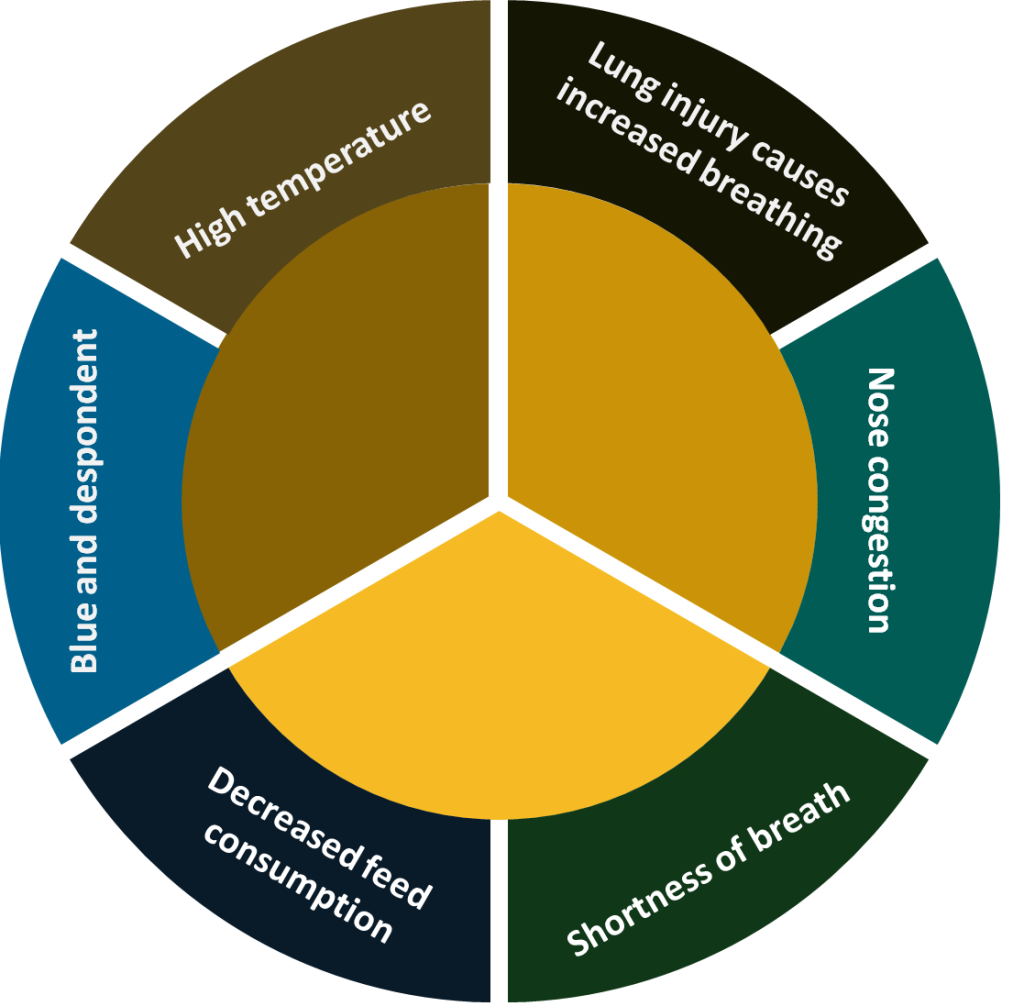
Calf pneumonia hurts the Indian dairy sector huge amounts of money each year and is extremely costly. Medical costs, lowered weight gain, additional work, and, above all, calf mortality all contribute to these deficits. Viruses, bacteria, farming, and administration elements all play a part in such calf pneumonia breakouts, making the disease complex. Avoidance is now the greatest cost-effective method and is the foundation for fighting this condition. So, in this article, we tackle the causes, effects, symptoms, preventions, and treatment of calf pneumonia.
Calf pneumonia, also comprehended as Bovine Respiratory Disease (BRD)[1], is a grave dysfunction that causes irritation and breathing ailments and respiratory canal structures. In young calves, it would be the most prevalent cause of poor progress and fatality. Younger, confined cows aged 5 weeks to 5 months, either being raised for milk supplements or in cattle farms, typically enclosed, contract the bovine respiratory disease (BRD) or pneumonia. It causes respiratory tissue as well as lung irritation. In severe circumstances, the harm could be irreparable. It is the major cause of loss and poor behaviour in dairy cattle between the ages of birth and ten months.
Recurrent calf pneumonia takes longer to develop and has no clear unwell phase. The calf might seem to be eating normally and may have a minor nose fluid, as well as an elevated breathing rate and coughing. Both types of respiratory sickness produce yield loss because daily weight gain is reduced, and severe illness might result in death.
Low food consumption is a common initial indicator of calf pneumonia. Anorexia is frequently caused by a high temperature (over 39.5 degrees Celsius), and a wet nasal secretion may be present. Bronchitis and a greater struggle to keep breathing are frequently the next signs (heaving). At this point, the nostril flow usually thickens and becomes denser, indicating that the animal is sick. As the condition worsens, the animal’s breathing effort increases as it is deprived of oxygen, leading to death. If the calf survives, the lungs are frequently too injured to recover and the animal will stay sickly and suffer from calf pneumonia on a regular basis.
To Summarize:

A sufficient amount of Colostrum in infancy is critical for the prevention of pneumonia as well as many other disorders such as scour. Colostrum protects the calf for the first 3-4 months of its life by providing vital defenses.
Combining calves of varying generations creates stress in the young calves and risks them to bacterial and viral diseases that could have been present in the larger calves. Prevent Congestion in your farms, Mitigate Strain induced by suckling, sterilization, and de-budding/dehorning, especially in cases of year when calf pneumonia is a large probability, such as the period following breeding.
Shortening the backs of confined calves has been used for years to lower the prevalence of calf pneumonia, and also, most farmers still apply this sweat-reducing procedure.
If you catch it soon enough and the calf merely has a fever, you can merely provide it with a non-steroidal anti-inflammatory medication to assist in lower swelling. It has been reported to be efficient in research. Antibiotics will be required for calves with serious pain. As immediately as you notice the first indications and symptoms, take them to a veterinarian. However, our first recommendation is that you employ all available preventative measures to avoid calf pneumonia at all costs.
The Final Words
Calf Pneumonia is an extremely fatal disease that not only causes death but a lot of gruesome pain. It is crucial to keep your farm in a hygienic condition at all times. Plus, make sure to not bring home any hybrid animal or object that could be a carrier of the disease. And, as we all know, prevention is the finest cure; try to maintain a very healthy diet for your calves to develop a healthy and immune body.
That’s the end of this article; we hope you found it informative and interesting. For any dairy-related queries and subject matter related to our A2 milk, check out our blogs!
Read Our Article: Mastitis in Cows: Causes, Detection, and Treatment
